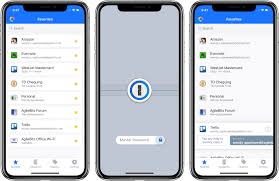How Password Managers Simply Security
One of the biggest issues people have with passwords is remembering them. Asking people to create unique passwords for each site quickly becomes a nightmare. Therefore, people fall back to using the same or variants of the same password over and over. They know they shouldn’t, but they don’t have the memory not to.
According to a Harris poll, 75% of respondents struggle to keep track of their passwords. 59% of respondents use a variation of a name or birthday in their password. For more concerning statistics on passwords, take a look at The United State of Passwords.
If only there was a convenient way to create unique passwords and not remember them. Enter password managers. These apps store your passwords in a protected environment and supply them when logging into websites or apps.
Password Managers to the Rescue
There are many such apps such as Lastpass, 1password, Bitwarden, Google Password manager, and Apple’s iCloud Keychain. Password managers store all of your passwords as well as other confidential information such as social security numbers or credit card information. They use a master password that should never be lost as it will prevent accessing passwords stored inside. Many of these apps, however, use biometrics such as fingerprint or facial recognition to access passwords.

In addition to storing your passwords, these apps can help in creating strong passwords based on your complexity requirements. If you need a 15-character password with at least 4 special characters and at least 3 numbers, these apps can create and then store them.
If you are concerned about storing all of your sensitive data in the cloud, Bitwarden can even be installed on your own server—with a little extra technical know-how.
Prevent your Credentials from being Compromised
A side benefit of using password managers is the protection from phishing attempts. Phishing is when a fake website convinces you to sign into their site, thus giving them your name and password. Since a password manager also stores the website address for each site, it will only autofill your password when you are on the legitimate site. So if you click on a link in a suspicious email, the password manager will not recognize the web address and not offer a username or password.
So how does one actually use a password manager once you’ve entered all of your login information? As mentioned before, one has to merely go to the login page of a site you’ve saved and it will autofill the username and password into the log in box. Of course, the password will be hidden behind **********.
In summary, added security has traditionally lowered convenience. Password managers have brought back convenience while still not sacrificing security.
